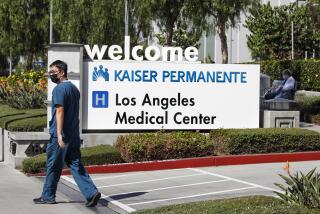How the Former Kaiser Companies Have Fared : Aluminum: Operations Are Cut Back in Hopes Move Will Stimulate Growth
- Share via
It made sense 30 years ago for Kaiser Aluminum to string its mills along the Mississippi River in Louisiana. They were closer to the big Eastern markets, closer to raw minerals from Jamaica and a crawfish’s skitter away from a plentiful supply of water.
But in the changed market of the 1980s, it makes sense for Kaiser to close down most of its primary aluminum-making operations, such as those at Chalmette, La., import most of its basic aluminum and finish, or fabricate, it at such places as its Trentwood, Wash., mill.
“We’ve done some pretty tough things,” Cornell C. Maier, chairman and chief executive of Oakland-based Kaiser Aluminum & Chemical, said in an interview.
Pulling back at Chalmette and Baton Rouge were hard decisions because it cost thousands of Kaiser workers their jobs. The Chalmette Works alone used to employ about 2,700; now less than 100 work there, and only 200 at Baton Rouge. After August, only two of four aluminum-smelting lines will be operating at the Kaiser plant in Ravenswood, W. Va.
But to Maier, 60, the tough choices are being made for the company’s future. Like the decision to spend $230 million to modernize its Trentwood rolling mill, even though it pushed expenses through the roof and cost valuable production during the changeover.
Unique Troubles
“Yes, we had troubles, the industry had troubles. We had some troubles that were unique to Kaiser Aluminum because of where our facilities were located, but we’ve had a program and we think a very good one, and we’re very confident we’re going to succeed in it,” he said.
The aluminum company, the third largest integrated aluminum maker in the United States, from the beginning was one of the most successful ventures of industrialist Henry J. Kaiser. Despite cyclical ups and downs of the market, its growth continued steadily, reaching peak earnings of $247 million in 1980.
But the downward spin began the next year, when earnings dropped nearly 50%. Losses in the past three years have nearly equaled 1980’s profits. Kaiser Aluminum most likely will end 1985 in the red also. In the first half, it lost $33.8 million, mostly from its aluminum operations.
Part of the cost-reduction program has been to make cuts in the pay and benefits of its unionized employees, which have also been shared by the corporate and office staffs. Maier estimates that the cuts will save the company $150 million over the three-year span of the union contracts. The size of the payroll has been pared, too, to about 15,000, down from 17,000 in 1983 and more than 25,000 in 1975.
Also, Kaiser has been selling off parts of the company to raise cash and lower expenses, and has increased its borrowing to record levels. Gone are its agriculture chemicals and refractories divisions, its trading and overseas sales subsidiary is being sold, and it is looking for a partner for Kaiser Energy, its oil and gas subsidiary.
Will Supply GM
It has shut down aluminum-making plants, and is operating its remaining primary aluminum facilities at 64% of capacity. “We are selling very little primary product, ingots,” said Maier, “and are selling most of the production that we have through fabricated products.” Just last week, Kaiser announced it would be a major supplier of fabricated products, such as aluminum reinforcement sheets for bumpers, to General Motors for use in its 1986 vehicles.
Analysts believe that the U.S. aluminum industry still has tough times ahead, because of depressed prices and stiff foreign competition.
But Maier sees an aluminum lining in every cloud. Its aluminum-making plant in Ghana is coming back into operation after two years of drought-induced shutdown. In the Pacific Northwest, some of its power costs have dropped. And a couple of product price hikes are giving the company “room for hope” that the “phenomenally low” aluminum prices may be on the way back up, he said.
KAISER ALUMINUM AT A GLANCE
Year ended Dec. 31 (in millions) 1984 1983 1982 Revenue $3,278 $2,617.5 $2,853.5 Net (loss) (53.9) (74.9) (115)
Includes $61.8-million loss on discontinued operations.
More to Read
Inside the business of entertainment
The Wide Shot brings you news, analysis and insights on everything from streaming wars to production — and what it all means for the future.
You may occasionally receive promotional content from the Los Angeles Times.









